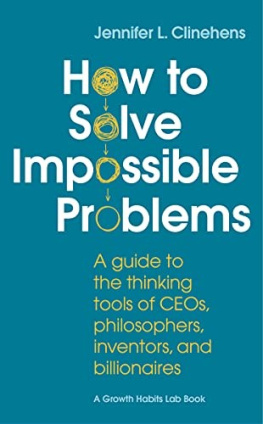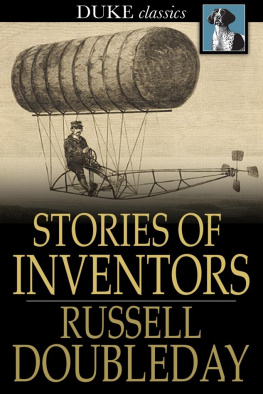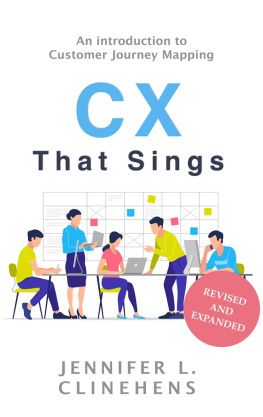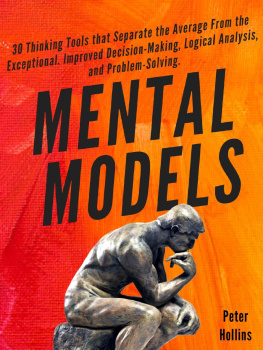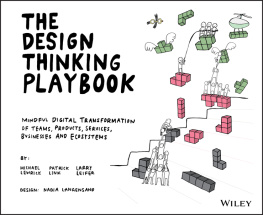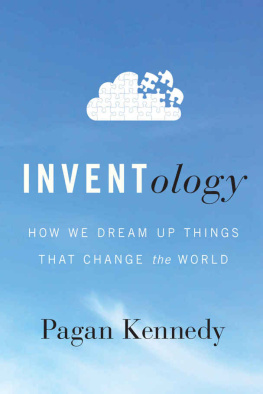Jennifer Clinehens - How to Solve Impossible Problems: A Guide to the Thinking Tools of CEOs, Philosophers, Inventors, and Billionaires
Here you can read online Jennifer Clinehens - How to Solve Impossible Problems: A Guide to the Thinking Tools of CEOs, Philosophers, Inventors, and Billionaires full text of the book (entire story) in english for free. Download pdf and epub, get meaning, cover and reviews about this ebook. year: 2022, genre: Romance novel. Description of the work, (preface) as well as reviews are available. Best literature library LitArk.com created for fans of good reading and offers a wide selection of genres:
Romance novel
Science fiction
Adventure
Detective
Science
History
Home and family
Prose
Art
Politics
Computer
Non-fiction
Religion
Business
Children
Humor
Choose a favorite category and find really read worthwhile books. Enjoy immersion in the world of imagination, feel the emotions of the characters or learn something new for yourself, make an fascinating discovery.
- Book:How to Solve Impossible Problems: A Guide to the Thinking Tools of CEOs, Philosophers, Inventors, and Billionaires
- Author:
- Genre:
- Year:2022
- Rating:4 / 5
- Favourites:Add to favourites
- Your mark:
- 80
- 1
- 2
- 3
- 4
- 5
How to Solve Impossible Problems: A Guide to the Thinking Tools of CEOs, Philosophers, Inventors, and Billionaires: summary, description and annotation
We offer to read an annotation, description, summary or preface (depends on what the author of the book "How to Solve Impossible Problems: A Guide to the Thinking Tools of CEOs, Philosophers, Inventors, and Billionaires" wrote himself). If you haven't found the necessary information about the book — write in the comments, we will try to find it.
Jennifer Clinehens: author's other books
Who wrote How to Solve Impossible Problems: A Guide to the Thinking Tools of CEOs, Philosophers, Inventors, and Billionaires? Find out the surname, the name of the author of the book and a list of all author's works by series.
How to Solve Impossible Problems: A Guide to the Thinking Tools of CEOs, Philosophers, Inventors, and Billionaires — read online for free the complete book (whole text) full work
Below is the text of the book, divided by pages. System saving the place of the last page read, allows you to conveniently read the book "How to Solve Impossible Problems: A Guide to the Thinking Tools of CEOs, Philosophers, Inventors, and Billionaires" online for free, without having to search again every time where you left off. Put a bookmark, and you can go to the page where you finished reading at any time.
Font size:
Interval:
Bookmark:
HOW TO SOLVE IMPOSSIBLE PROBLEMS
A GUIDE TO THE THINKING TOOLS OF CEOS, PHILOSOPHERS, INVENTORS, AND BILLIONAIRES
JENNIFER L. CLINEHENS
PUBLISHED BY: CHOICE HACKING LTD
Copyright 2022 by Jennifer L. Clinehens and Choice Hacking Ltd
All rights reserved.
No part of this book may be reproduced in any form or by any electronic or mechanical means, including information storage and retrieval systems, without written permission from the author, except for the use of brief quotations in a book review.
To Rob, whose love and support makes it all possible xx
I. Thinking Traps That Kill Problem Solving
1. 18 Common Cognitive Biases That Stop You from Thinking Clearly
2. The Danger of a Good Story: How Our Brains Love of Narrative Can Undermine Creative Solutions
II. Frameworks for Creative Problem Solving
3. First Principles Thinking
4. Phoenix Checklist
5. Reframing
6. 5 Whys
7. Inversion
8. Lateral Thinking
9. S.C.A.M.P.E.R. Framework
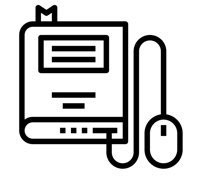
While youre reading, dont forget to check out the FREE Companion Course, launching February 21, 2022. You can learn more and sign up at GrowthHabitsLab.com/CompanionCourse101
The free course includes:
Bonus real-life examples and use cases
Bonus video content
Downloadable worksheets for all principles
Thank you so much for buying How to Solve Impossible Problems! I hope you enjoy it.
If you read the book and like it, please consider leaving a review with your favorite book retailer or Goodreads.
Reviews are a huge help for self-published authors because it helps us get our books in front of readers we otherwise wouldnt reach. Thank you!
Every day were presented with what seem like impossible challenges. Issues that you cant crack, even after weeks, months, or years of trying.
How do you approach these challenges? Do you have a strategy that you follow, or do you just think harder and hope for the best? Theres a better way to solve impossible problems improve the quality of your thinking.
Better thinking, problem-solving, and reasoning are skills. They can be developed through learning new frameworks and expanding our mental models. Lucky for us, brilliant thinkers have left behind proven ways to attack these so-called impossible problems. This book aims to capture 7 of the most effective frameworks, models, and strategies and give you practical ways to apply them to your work.
Why I wrote this book
As I write this introduction, it's early 2022, and the world feels like it's full of big, scary challenges - scientific, medical, agricultural, political, social, ethical, and artistic. It feels like the last few years have been nothing but problem after problem. And while the world is full of smart people the skill of problem-solving isnt being developed to its full potential.
I remember sitting in a classroom and having a challenge laid down by my teachers. And their only advice or direction was usually "go figure it out," when asked how best to approach the problem. Instead of arming students with strategies and processes that could supercharge their efforts, many teachers seemed to think the act of figuring it out was enough. That we would somehow magically invent an effective, efficient, repeatable, and scalable problem-solving process on our own.
It's not that these teachers were insensitive, uncaring, or bad at their jobs. I'm convinced they sent me out into the problem-solving wilderness with few tools, because that's what their teachers and their teacher's teachers had done to them. They believed that leaving problem-solving up to the student meant we'd become more creative, flexible, and independent thinkers. More than likely, no one had modeled problem-solving frameworks, approaches, and strategies for them. Instead, if they figured out a process, they were deemed "smart" or "gifted." But if they had been introduced to systematic problem-solving approaches to begin with they could have saved half the time and gotten twice as far.
For too many, including myself, discovering tools and frameworks for problem-solving was something they had to do independently through trial, error, and discovery.
My problem-solving journey
I've spent my career traveling across different industries, countries, and types of businesses. With every new challenge, I felt like I was reinventing the wheel. So I began searching for ways to attack problems in a more systematic way. I wanted structure, but I also didn't want the process to become so mechanical that it killed my creativity.
For example, the first fifteen years of my career were spent as a professional classical violist. I used problem-solving frameworks to unravel tricky passages or teach a young child to pull a few squeaky notes from a violin. Then as an entrepreneur in the music industry, I used problem-solving to create a new business, brand it, and market it. These challenges were not only creative but also called for a systemic approach to problem-solving, so I could go further, faster. Unfortunately, I was still stuck in figure it out land.
Later, when I worked in corporate innovation and customer experience roles and completed my MBA, I was introduced to more formal ways to breakdown problems using consulting frameworks. But these approaches never addressed the creative side of the problem-solving equation. Before my MBA, I got my master's in creative brand management from the prestigious Virginia Commonwealth University Brandcenter - a practice-focused advertising program - that taught me creative ways to attack business problems without the MBA-standard systems and frameworks (that often led to cookie-cutter thinking).
It was this combination of the logical MBA approach and the more freewheeling advertising approach, that I began to see how systematic problem-solving frameworks could help me find creative solutions faster.
How this book can help you
Being a better problem-solver has lots of benefits. For example, you can advance more quickly at work, start a business, write a novel, or even invent something that improves daily life for the entire planet.
This book will get you from zero to armed with the very best thinking tools. From those that help you identify the root cause of your problem to those that can help you remix existing solutions into something creative, effective, and surprising.
In the first part of this book, you'll learn about some common errors in thinking - called Cognitive Biases - and how they can stand between you and thinking clearly. You'll learn how the stories we tell ourselves about our challenges, how to approach them, and potential solutions are subject to these same biases. But you'll also learn how to begin questioning yourself so you can get out of your own way.
In part two, I'll introduce you to 7 key problem-solving tools and frameworks used by some of the world's great thinkers - including real-world examples for each and some questions to get you started.
I look forward to seeing what solutions you come up with using the tools in this book. Send me your thoughts at Jen@GrowthHabitsLab.com or subscribe to my free newsletter at GrowthHabitsLab.com/read. Good luck!
We all make the same types of mistakes over and over, because of the basic wiring of our brains.
- Dan Ariely, Behavioral Scientist
When problem-solving, some of the biggest stumbling blocks are not the challenges in front of us, but our own preconceived notions, errors in thinking, and mental barriers.
Next pageFont size:
Interval:
Bookmark:
Similar books «How to Solve Impossible Problems: A Guide to the Thinking Tools of CEOs, Philosophers, Inventors, and Billionaires»
Look at similar books to How to Solve Impossible Problems: A Guide to the Thinking Tools of CEOs, Philosophers, Inventors, and Billionaires. We have selected literature similar in name and meaning in the hope of providing readers with more options to find new, interesting, not yet read works.
Discussion, reviews of the book How to Solve Impossible Problems: A Guide to the Thinking Tools of CEOs, Philosophers, Inventors, and Billionaires and just readers' own opinions. Leave your comments, write what you think about the work, its meaning or the main characters. Specify what exactly you liked and what you didn't like, and why you think so.

